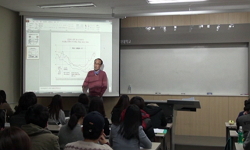With significant improvements in success rates for free flap reconstruction of the head and neck, attention has turned to donor site morbidity associated with osteocutaneous free flaps. In this review, we address the morbidity associated with harvest ...
http://chineseinput.net/에서 pinyin(병음)방식으로 중국어를 변환할 수 있습니다.
변환된 중국어를 복사하여 사용하시면 됩니다.
- 中文 을 입력하시려면 zhongwen을 입력하시고 space를누르시면됩니다.
- 北京 을 입력하시려면 beijing을 입력하시고 space를 누르시면 됩니다.


Osteocutaneous flaps for head and neck reconstruction: A focused evaluation of donor site morbidity and patient reported outcome measures in different reconstruction options
한글로보기https://www.riss.kr/link?id=A105958628
- 저자
- 발행기관
- 학술지명
- 권호사항
-
발행연도
2018
-
작성언어
English
- 주제어
-
등재정보
SCOPUS,KCI등재,ESCI
-
자료형태
학술저널
- 발행기관 URL
-
수록면
495-503(9쪽)
- DOI식별코드
- 제공처
- 소장기관
-
0
상세조회 -
0
다운로드
부가정보
다국어 초록 (Multilingual Abstract)
With significant improvements in success rates for free flap reconstruction of the head and neck, attention has turned to donor site morbidity associated with osteocutaneous free flaps. In this review, we address the morbidity associated with harvest of the four most commonly used osteocutaneous flaps; the free fibula flap, the scapula flap, the iliac crest flap and the radial forearm flap. A comprehensive literature search was performed to identify articles relevant to donor site morbidity for these flaps. We assessed morbidity in terms of incidence of delayed healing, chronic pain, aesthetic outcomes, site specific complications and patient satisfaction/quality of life. Weighted means were calculated when sufficient studies were available for review. The radial forearm and free fibula flaps are associated with high rates of delayed healing of approximately 20% compared to the scapular (<10%) and iliac flaps (5%). The radial forearm flap has higher rates of chronic pain (16.7%) and dissatisfaction with scar appearance (33%). For the majority of these patients harvest of one of these four osteocutaneous does not limit daily function at long-term follow-up. The scapular osteocutaneous flap is associated with the lowest relative morbidity and should be strongly considered when the recipient defect allows. The radial forearm is associated with higher morbidity in terms of scarring, fractures, chronic pain and wrist function and should not be considered as first choice when other flap options are available.
동일학술지(권/호) 다른 논문
-
- 대한성형외과학회
- Ciaran M Hurley
- 2018
- SCOPUS,KCI등재,ESCI
-
Lower facial contouring surgery using a novel method: M-genioplasty
- 대한성형외과학회
- June Bok Lee
- 2018
- SCOPUS,KCI등재,ESCI
-
- 대한성형외과학회
- Jeongmin Yoon
- 2018
- SCOPUS,KCI등재,ESCI
-
Application of a paste-type acellular dermal matrix for coverage of chronic ulcerative wounds
- 대한성형외과학회
- Minseok Jeon
- 2018
- SCOPUS,KCI등재,ESCI




 ScienceON
ScienceON




